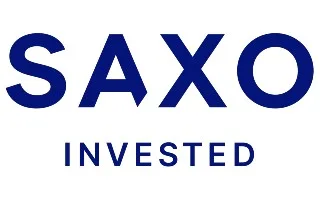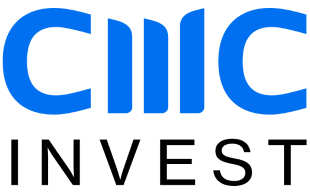$157.24
Phillips 66 is an oil & gas refining & marketing business with stocks listed in the US. Phillips 66 shares (PSX) are listed on the NYSE and all prices are listed in US Dollars. Its last market close was US$157.24 – an increase of 1.64% over the previous week. Here's how to invest if you're based in Australia.
How to buy shares in Phillips 66
- Compare share trading platforms. To buy shares in a company listed in the US from Australia you'll need to find a trading platform that offers access to US stock markets. Look for a platform with low brokerage and foreign exchange fees.
- Open and fund your brokerage account. Complete an application with your personal and financial details, which will typically include your ID and tax file number. Fund your account with a bank transfer, credit card or debit card.
- Search for Phillips 66. Find the share by name or ticker symbol: PSX. Research its history to confirm it's a solid investment that matches your financial goals.
- Purchase now or later. Buy today with a market order or use a limit order to delay your purchase until Phillips 66 reaches your desired price. To spread out your risk, look into dollar-cost averaging, which smooths out buying using consistent intervals and amounts.
- Decide on how many to buy. At last close price of US$157.79, weigh your budget against a diversified portfolio that can minimise risk through the market's ups and downs. You may be able to buy a fractional share of Phillips 66, depending on your broker.
- Check in on your investment. Congratulations, you own a part of Phillips 66. Optimise your portfolio by tracking how your stock — and even the business — performs with an eye on the long term. You may be eligible for dividends and shareholder voting rights.
Our top pick for
US stocks

Our top pick for
Best for beginner

Our top pick for
Dividend investing

Phillips 66 stock price (NYSE:PSX)
Use our graph to track the performance of PSX stocks over time.Phillips 66 shares at a glance
| 52-week range | US$87.4678 - US$174.08 |
|---|---|
| 50-day moving average | US$154.8406 |
| 200-day moving average | US$129.1823 |
| Target price | US$169.01 |
| PE ratio | 10.1932 |
| Dividend yield | US$4.2 (2.92%) |
| Earnings per share (TTM) | US$15.48 |
Use the fields above to explore the returns from a historical investment. Please refer to the charts further up this page to see performance over 5 years, or other periods. Past performance doesn't indicate future results. Capital is at risk.
Phillips 66 price performance over time
Historical closes compared with the last close of $157.24
| 1 week (2024-04-19) | 1.64% |
|---|---|
| 1 month (2024-03-26) | 0.41% |
| 3 months (2024-01-26) | 12.14% |
| 6 months (2023-10-26) | 42.82% |
| 1 year (2023-04-25) | 58.32% |
|---|---|
| 2 years (2022-04-25) | 94.08% |
| 3 years (2021-04-26) | 105.54% |
| 5 years (2019-04-26) | 65.66% |
Compare trading platforms to buy Phillips 66 shares
Is it a good time to buy Phillips 66 stock?
The technical analysis gauge below displays real-time ratings for the timeframes you select. However, this is not a recommendation. It represents a technical analysis based on the most popular technical indicators: Moving Averages, Oscillators and Pivots. Finder might not concur and takes no responsibility.
Is Phillips 66 under- or over-valued?
Valuing Phillips 66 stock is incredibly difficult, and any metric has to be viewed as part of a bigger picture of Phillips 66's overall performance. However, analysts commonly use some key metrics to help gauge the value of a stock.
Phillips 66's P/E ratio
Phillips 66's current share price divided by its per-share earnings (EPS) over a 12-month period gives a "trailing price/earnings ratio" of roughly 10x. In other words, Phillips 66 shares trade at around 10x recent earnings.
That's relatively low compared to, say, the trailing 12-month P/E ratio for the NASDAQ 100 at the end of 2019 (27.29). The low P/E ratio could mean that investors are pessimistic about the outlook for the shares or simply that they're under-valued.
Phillips 66's PEG ratio
Phillips 66's "price/earnings-to-growth ratio" can be calculated by dividing its P/E ratio by its growth – to give 0.731. A low ratio can be interpreted as meaning the shares offer better value, while a higher ratio can be interpreted as meaning the shares offer worse value.
The PEG ratio provides a broader view than just the P/E ratio, as it gives more insight into Phillips 66's future profitability. By accounting for growth, it could also help you if you're comparing the share prices of multiple high-growth companies.
Phillips 66's EBITDA
Phillips 66's EBITDA (earnings before interest, taxes, depreciation and amortisation) is US$10 billion (£8 billion).
The EBITDA is a measure of a Phillips 66's overall financial performance and is widely used to measure stock profitability.
Phillips 66 share price volatility
Over the last 12 months, Phillips 66's shares have ranged in value from as little as US$87.4678 up to US$174.08. A popular way to gauge a stock's volatility is its "beta".
Beta measures a share's volatility in relation to the market. The market (NYSE average) beta is 1, while Phillips 66's is 1.38. This would suggest that Phillips 66's shares are more volatile than the average for this exchange and represent, relatively speaking, a higher risk (but potentially also market-beating returns).
Phillips 66 financials
| Revenue TTM | US$147.4 billion |
|---|---|
| Operating margin TTM | 4.32% |
| Gross profit TTM | US$20.1 billion |
| Return on assets TTM | 6.6% |
| Return on equity TTM | 22.02% |
| Profit margin | 4.76% |
| Book value | 71.046 |
| Market capitalisation | US$67.5 billion |
TTM: trailing 12 months
Phillips 66 share dividends
Dividend payout ratio: 27.22% of net profits
Recently Phillips 66 has paid out, on average, around 27.22% of net profits as dividends. That has enabled analysts to estimate a "forward annual dividend yield" of 2.92% of the current stock value. This means that over a year, based on recent payouts (which are sadly no guarantee of future payouts), Phillips 66 shareholders could enjoy a 2.92% return on their shares, in the form of dividend payments. In Phillips 66's case, that would currently equate to about $4.2 per share.
While Phillips 66's payout ratio might seem fairly standard, it's worth remembering that Phillips 66 may be investing much of the rest of its net profits in future growth.
Phillips 66's most recent dividend payout was on 2 June 2024. The latest dividend was paid out to all shareholders who bought their shares by 16 May 2024 (the "ex-dividend date").
Phillips 66's environmental, social and governance track record
Environmental, social and governance (known as ESG) criteria are a set of three factors used to measure the sustainability and social impact of companies like Phillips 66.
When it comes to ESG scores, lower is better, and lower scores are generally associated with lower risk for would-be investors.
Phillips 66's total ESG risk score
Total ESG risk: 27.29
Socially conscious investors use ESG scores to screen how an investment aligns with their worldview, and Phillips 66's overall score of 27.29 (as at 12/31/2018) is nothing to write home about – landing it in it in the 56th percentile of companies rated in the same sector.
ESG scores are increasingly used to estimate the level of risk a company like Phillips 66 is exposed to within the areas of "environmental" (carbon footprint, resource use etc.), "social" (health and safety, human rights etc.), and "governance" (anti-corruption, tax transparency etc.).
Phillips 66's environmental score
Environmental score: 18.43/100
Phillips 66's environmental score of 18.43 puts it squarely in the 2nd percentile of companies rated in the same sector. This could suggest that Phillips 66 is a leader in its sector terms of its environmental impact, and exposed to a lower level of risk.
Phillips 66's social score
Social score: 5.57/100
Phillips 66's social score of 5.57 puts it squarely in the 2nd percentile of companies rated in the same sector. This could suggest that Phillips 66 is a leader in its sector when it comes to taking good care of its workforce and the communities it impacts.
Phillips 66's governance score
Governance score: 2.29/100
Phillips 66's governance score puts it squarely in the 2nd percentile of companies rated in the same sector. That could suggest that Phillips 66 is a leader in its sector when it comes to responsible management and strategy, and exposed to a lower level of risk.
Phillips 66's controversy score
Controversy score: 3/5
ESG scores also evaluate any incidences of controversy that a company has been involved in. Phillips 66 scored a 3 out of 5 for controversy – a middle-of-the-table result reflecting that Phillips 66 hasn't always managed to keep its nose clean.
Environmental, social, and governance (ESG) summary
Phillips 66 was last rated for ESG on: 2019-01-01.
| Total ESG score | 27.29 |
|---|---|
| Total ESG percentile | 56.02 |
| Environmental score | 18.43 |
| Environmental score percentile | 2 |
| Social score | 5.57 |
| Social score percentile | 2 |
| Governance score | 2.29 |
| Governance score percentile | 2 |
| Level of controversy | 3 |
Phillips 66 overview
Phillips 66 operates as an energy manufacturing and logistics company in the United States, the United Kingdom, Germany, and internationally. It operates through four segments: Midstream, Chemicals, Refining, and Marketing and Specialties (M&S). The Midstream segment transports crude oil and other feedstocks; delivers refined petroleum products to market; provides terminaling and storage services for crude oil and refined petroleum products; transports, stores, fractionates, exports, and markets natural gas liquids; provides other fee-based processing services; and gathers, processes, transports, and markets natural gas. The Chemicals segment produces and markets ethylene and other olefin products; aromatics and styrenics products, such as benzene, cyclohexane, styrene, and polystyrene; and various specialty chemical products, including organosulfur chemicals, solvents, catalysts, and chemicals used in drilling and mining. The Refining segment refines crude oil and other feedstocks into petroleum products, such as gasolines, distillates, aviation, and renewable. The M&S segment purchases for resale and markets refined petroleum products, including gasolines, distillates, and aviation fuels. This segment also manufactures and markets specialty products, such as base oils and lubricants. Phillips 66 was founded in 1875 and is headquartered in Houston, Texas.
Stocks similar to Phillips 66
Phillips 66 in the news

Why Retain Strategy is Apt for Phillips 66 (PSX) Stock Now

Is Trending Stock Phillips 66 (PSX) a Buy Now?

Phillips 66 (PSX) Surpasses Market Returns: Some Facts Worth Knowing
Frequently asked questions
More guides on Finder
-
How to invest in the Sun Silver IPO
Everything we know about the Sun Silver IPO, plus information on how to buy in.
-
How to invest in the Tasmea Limited IPO
Everything we know about the Tasmea Limited IPO, plus information on how to buy in.
-
How to buy Far Northern Resources shares
Steps to owning and managing Far Northern Resources shares.
-
What are the best commodity ETFs on the ASX in 2024?
Commodity ETFs can be used to hedge against inflation. Here's what they do, why they should be on your watchlist and how they can help your portfolio.
-
Best performing stocks on the ASX in 2024 (Updated weekly)
Looking for the best performing stocks in Australia? We update this list weekly.
-
How to buy Gol Linhas Aereas Inteligentes SA ADR (GOL) shares in Australia
Steps to owning and managing Gol Linhas Aéreas Inteligentes SA shares from Australia.
-
Superhero review: ASX and US share trading app
Trade ASX stocks and ETFs with a $2 brokerage fee and a low minimum investment of just $10.
-
The cheapest ETFs on the ASX
These ETFs have the lowest fees on the market, but does that make them the best?
-
Alternatives to CommSec: 7 trading platforms to consider
You've heard of CommSec but how does it stack up to the likes of IG, CMC Invest and other players in the market?
-
Westpac Share Trading Account review
Westpac Share Trading allows you to take control of your investments. Find out if its right for you.
Ask a Question

